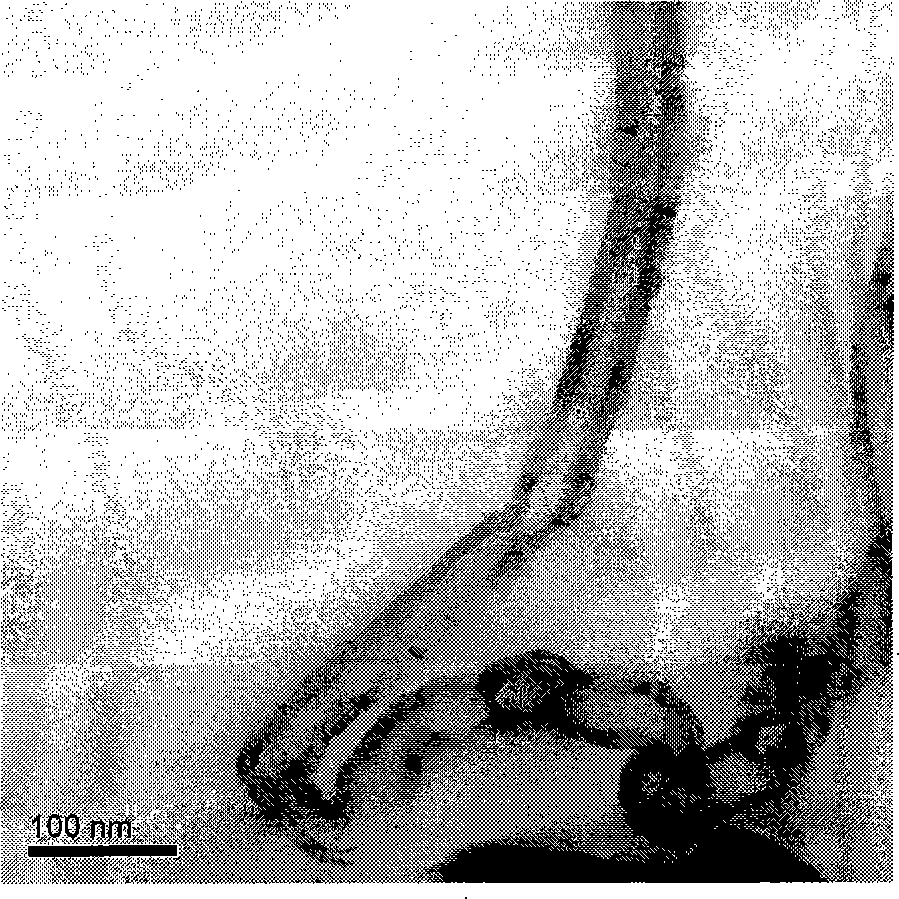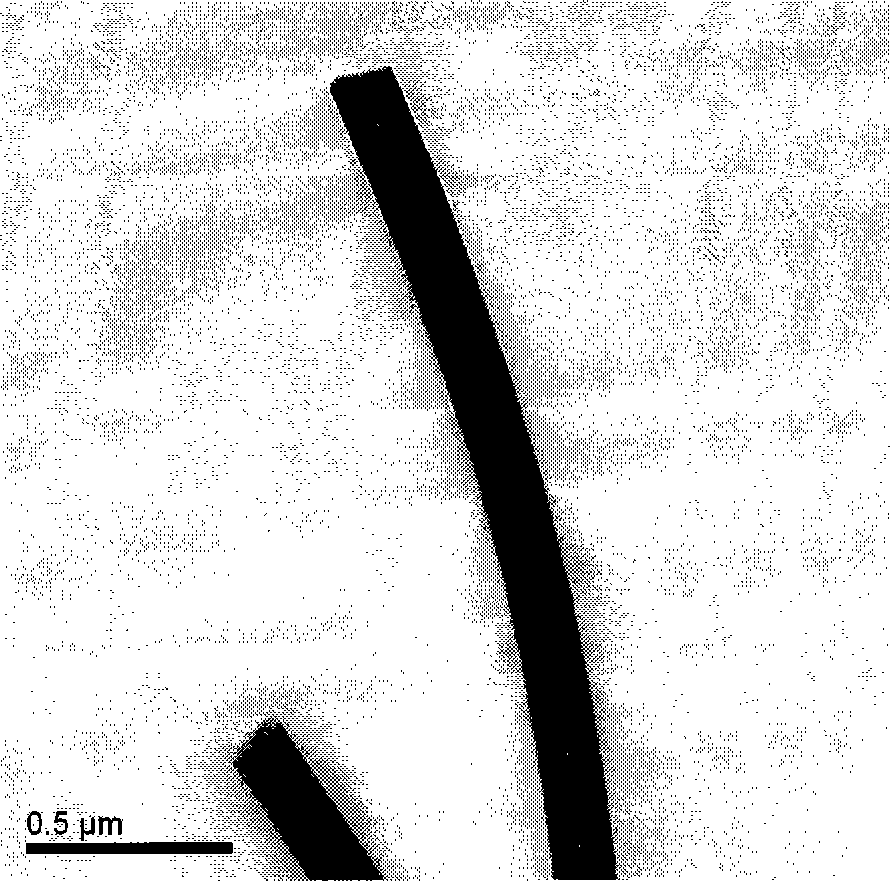Production of nano-carbon tube
A technology of carbon nanotubes and ferrocene, applied in the direction of nanostructure manufacturing, nanotechnology, nanotechnology, etc., can solve the problems of carbon nanotube research in the ascendant, and achieve low cost, easy large-scale production, and easy control of conditions Effect
- Summary
- Abstract
- Description
- Claims
- Application Information
AI Technical Summary
Problems solved by technology
Method used
Image
Examples
Embodiment 1
[0023] (1) Dissolve 0.05 g of bulk ferrocene in 5 mL of xylene.
[0024] (2) Add the solution obtained in step (1) into a quartz weighing bottle, and then put the weighing bottle into a hydrothermal reaction kettle.
[0025] (3) Put the reaction kettle into a box-type resistance furnace and heat to 600° C. to react for 18 minutes to obtain a black product, and take the black product out of a quartz weighing bottle to obtain carbon nanotubes.
[0026] The product obtained in step (3) is characterized by its structure and morphology with SEM and TEM respectively, figure 1 The inner diameter of the carbon nanotubes obtained under this reaction condition is about 21 nm.
Embodiment 2
[0028] (1) Dissolve 0.05 g of bulk ferrocene in 5 mL of xylene.
[0029] (2) Add the solution obtained in step (1) into a quartz weighing bottle, and then put the weighing bottle into a hydrothermal reaction kettle.
[0030] (3) Put the reaction kettle into a box-type resistance furnace and heat it to 650° C. for 15 minutes to react to obtain a black product, and take the black product out of a quartz weighing bottle to obtain carbon nanotubes.
[0031] The structure and morphology of the product obtained in step (3) were characterized by SEM and TEM respectively, and the inner diameter of the obtained carbon nanotube was about 19 nm.
Embodiment 3
[0033] (1) Dissolve 0.05 g of bulk ferrocene in 5 mL of xylene.
[0034] (2) Add the solution obtained in step (1) into a quartz weighing bottle, and then put the weighing bottle into a hydrothermal reaction kettle.
[0035] (3) Put the reaction kettle into a box-type resistance furnace and heat to 700° C. for 15 minutes to react to obtain a black product, and take the black product out of a quartz weighing bottle to obtain carbon nanotubes.
[0036] The product obtained in step (3) is characterized by its structure and morphology with SEM and TEM respectively, figure 2 The carbon nanotubes obtained under this reaction condition have an inner diameter of about 15 nm.
PUM
 Login to View More
Login to View More Abstract
Description
Claims
Application Information
 Login to View More
Login to View More - R&D
- Intellectual Property
- Life Sciences
- Materials
- Tech Scout
- Unparalleled Data Quality
- Higher Quality Content
- 60% Fewer Hallucinations
Browse by: Latest US Patents, China's latest patents, Technical Efficacy Thesaurus, Application Domain, Technology Topic, Popular Technical Reports.
© 2025 PatSnap. All rights reserved.Legal|Privacy policy|Modern Slavery Act Transparency Statement|Sitemap|About US| Contact US: help@patsnap.com



